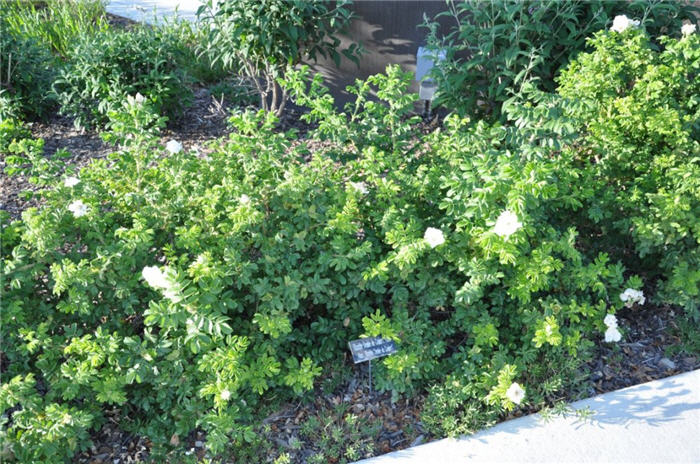| Botanical Name: Rosa 'Blanc de Coubert' | |
| Common Name: Blanc de Coubert Rugosa Rose |

-
Anatomy
-
Culture
-
Design
Plant Type
Shrub, Herb
Height Range
3-6'
Flower Color
White
Flower Season
Summer
Leaf Color
Green, Dark Green
Bark Color
Brown
Fruit Color
Red
Fruit Season
Fall
Sun
Full, Half
Water
High
Growth Rate
Fast, Moderate
Soil Type
Loam
Soil Condition
Average, Rich, Well-drained
Soil pH
Neutral
Adverse Factors
Attracts Bees, Thorns/Spines
Design Styles
English Cottage, Formal, Mediterranean, Spanish
Accenting Features
Fragrance, Showy Flowers, Specimen
Seasonal Interest
Summer
Location Uses
Shrub Border, Foundation, Patio
Special Uses
Cut Flowers, Hedge, Small Spaces
Attracts Wildlife
Butterflies
Information by: Stephanie Duer
Photographer:
Photographer:
-
Description
-
Notes
'Blanc Double de Coubert' is a hybrid rugosa shrub rose which typically grows to 5 feet tall and as wide. It features profuse, strongly fragrant, pure white, semi-double flowers which bloom throughout the summer and into fall. Large, orange-red hips follow blooms. Foliage is leathery, wrinkled, and dark green. Rugosa-type roses are generally more hardy than are hybrid teas, in part becuase their foliage is more robust. Use as a hedge, an addition to the shrub or foundation border, in mingled with ornamental grasses. Keep away from paths as it is thorny. If you want to harvest the rose hips, avoid the use of any chemicals and harvest after the first frost.
Grow in well-drained loamy soils in full sun to part shade. Best flowering and disease resistance generally occur in full sun, however. Water deeply and regularly; mornings are best and avoid overhead watering as it can lead to leaf diseases. Good air circulation promotes vigorous and healthy growth and helps control foliar diseases. Summer mulch helps retain moisture, keeps roots cool and discourages weeds. Remove spent flowers to encourage rebloom. Crowns need winter protection, so replenish the mulch layer if necessary (though keep the mulch away from the stem of the plant). Remove and destroy diseased leaves from plants, as practicable, and clean up and destroy dead leaves from the ground around the plants both during the growing season and as part of a thorough cleanup during winter (dormant season). Prune as needed in late winter to early spring (see the Guide).